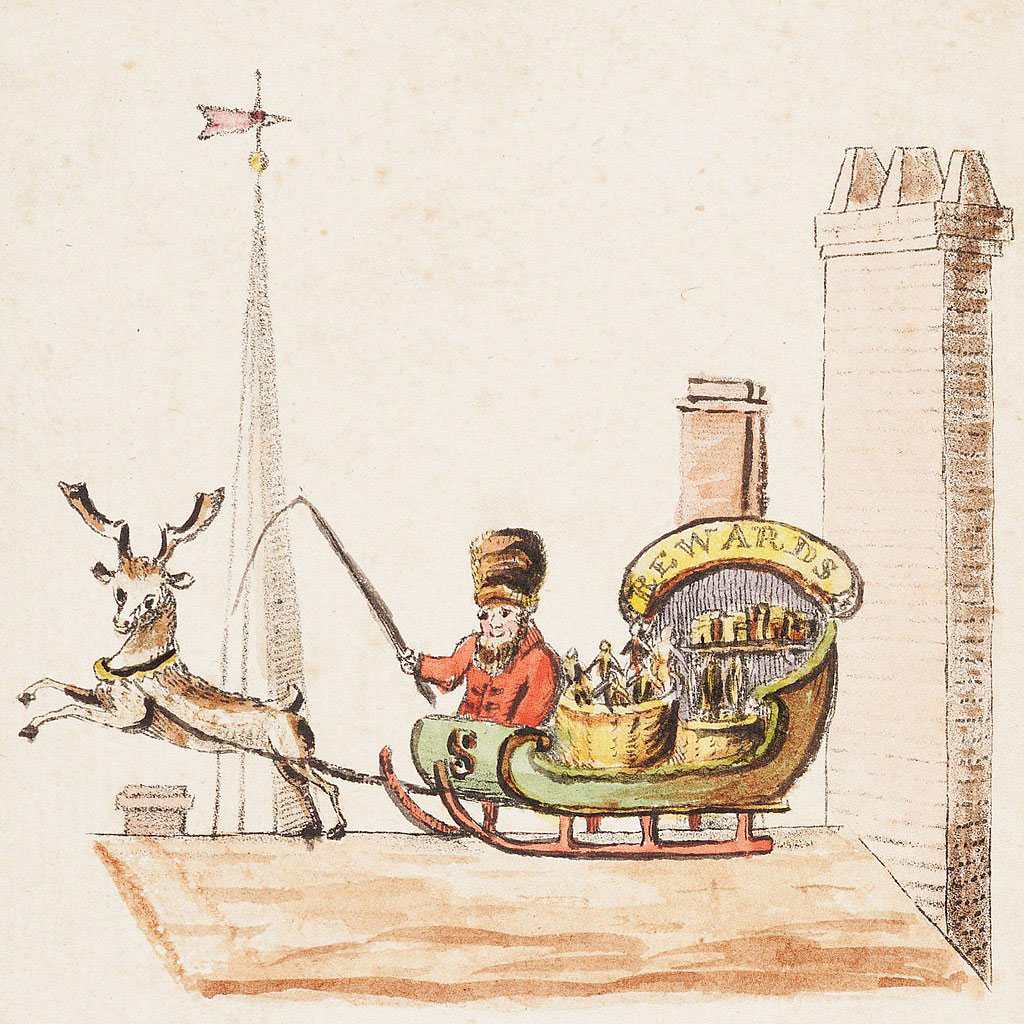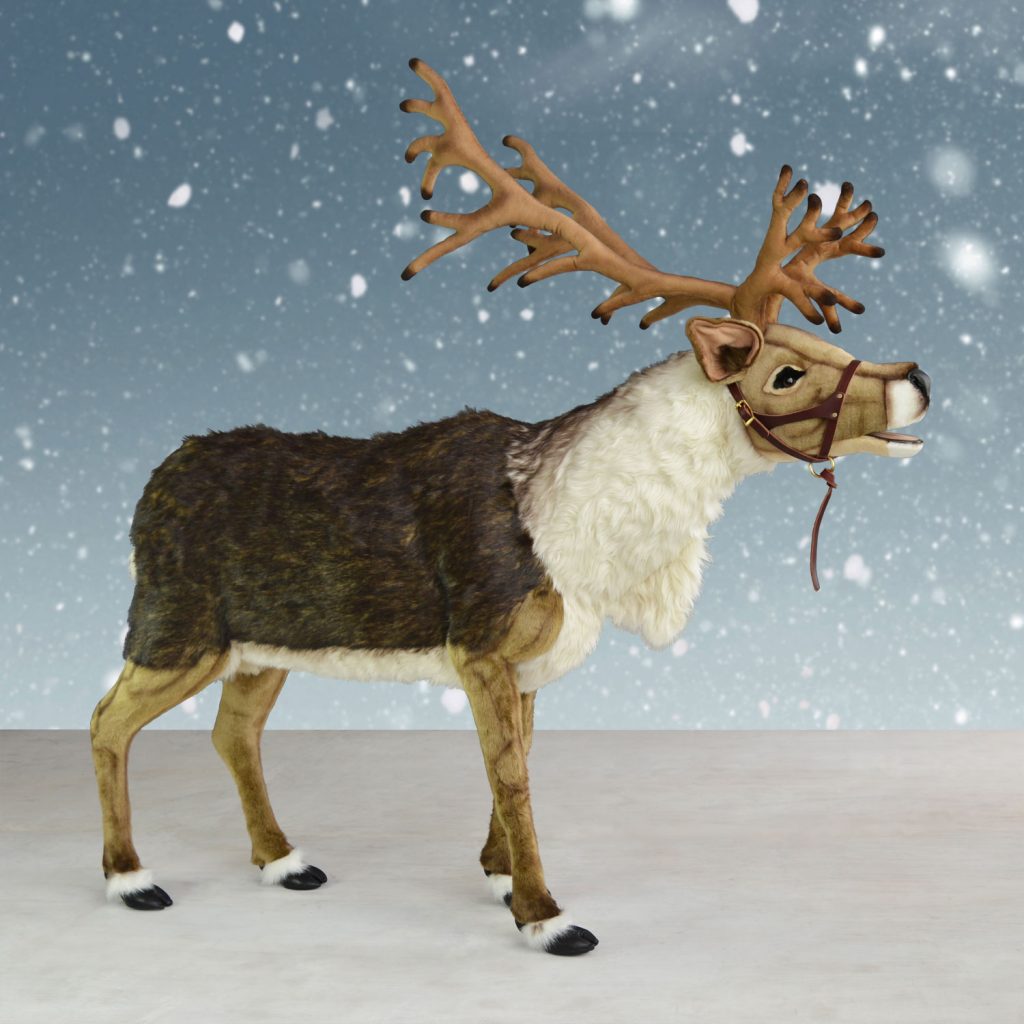We can understand how Saint Nicholas/Santa Claus came to represent the generous spirit of Christmas. He is a saint, after all. But the little town of Bethlehem isn’t particularly well known for its population of outdoor reindeer (Rangifer tarandus) grazing about. So why did Santa choose that particular hoofed beast to steer his sleigh on Christmas Day?
Could it be because this graceful animal, used as a beast of burden in the regions near the Arctic Circle, is the only deer species that can be domesticated? Or perhaps because Santa doesn’t want to share his Christmas cookies? After all, outdoor reindeer like to eat moss, herbs, ferns, grasses, shoots, and leaves. Their favorite food is lichen—a moss-like fungi. Better not bake lichen cookies for Christmas, or you’ll have reindeer thundering down your chimney instead!
Kidding aside, there are many fun facts you can learn about reindeer. Here are just a few:
- An average adult reindeer eats 9 to 18 pounds of flora a day. They eat healthy, but they eat a lot!
- Did you know that reindeer and caribou are the same animal? Europeans call these sturdy beasts reindeer, while in North America we refer to the wild ones as caribou (but reindeer if they are domesticated).
- Unlike most deer species (of which only the males grow antlers), female reindeer sport antlers as well. Though their antlers are not as long, the females get to keep their antlers well past Christmas and throughout the winter, whereas most males lose their antlers in November or early December.
- Nose to hooves, outdoor reindeer are covered with hair! Even their antlers have a covering of velvet. Hair cover and a host of tiny veins in their noses warms the air as they breath in. Their cloven hooves, also hairy, are perfect for traversing frozen and muddy terrain in the winter. In the summer, when the ground is warmer, their hooves expand.
- Some subspecies of outdoor reindeer have knees that make a clicking noise when they walk; this auditory cue helps them stay together in stormy weather with low visibility.
- Within hours of being born, not only can reindeer stand, they can sprint!
- Outdoor reindeer are strong swimmers.
- They can see UV light, which helps them spot food and predators in the dim Artic light.
- Outdoor reindeer have a lifespan of about 15 years in the wild and 20 years if they are domesticated.
- Like Santa’s trusted troupe, outdoor reindeer like to live in herds—some as large as five hundred thousand!
And just for fun, watch Aatu, a domesticated reindeer in Lapland, eat his dinner at the dining table, watch television, and go for walks with his owner.
Which brings us back to our original question…
Where Did Outdoor Christmas Reindeer Come From?
As usual, literary imagination is to blame. Santa’s ensemble of outdoor reindeer first gained fame in 1821 when William B. Gilley published a small booklet titled A New Year’s Present to the Little Ones from Five to Twelve. It featured a poem, “Old Santeclaus with Much Delight,” by an anonymous writer, which begins:
Old Santeclaus with much delight
His reindeer drives this frosty night.
O’er chimneytops, and tracks of snow,
To bring his yearly gifts to you.

The poem, by the way, is notable for including the earliest known reference to Santa Claus traveling in a vehicle drawn by reindeer.
A couple of years later, the Troy Sentinel published a more famous poem, “Account of a Visit from St. Nicholas,” which is perhaps better known as “The Night Before Christmas,” by Clement Clarke Moore. The merry poem christened the original eight flying reindeer, giving each one a memorable moniker—Dasher, Dancer, Prancer, Vixen, Comet, Cupid, Donner, and Blitzen. The ninth and most beloved outdoor reindeer, Rudolph, was added to the little herd in 1939 when Montgomery Ward department store asked one of its copywriters, 34-year-old Robert L. May, to create a Christmas story the store could give away to shoppers as a promotional gimmick.
While we mere mortals have successfully domesticated outdoor reindeer, we have yet to teach them how to fly. Until then, you can bring home one of our beautiful life-size outdoor reindeer or other animals, pick a name you like best, place them on your lawn or balcony, and let your imagination soar!



